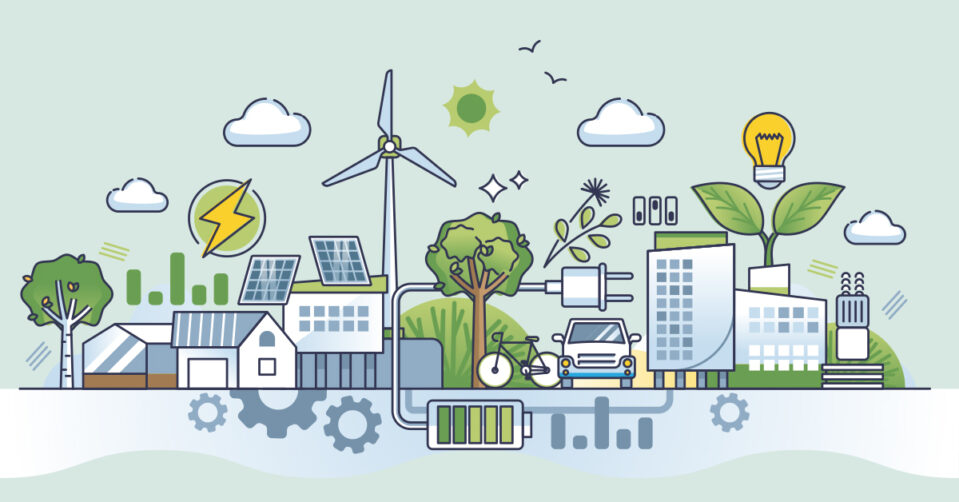Powering Up for a Clean Energy Transition
Jessica Bell (Energy Director & Deputy Director) / October 12, 2023

On November 3, the Department of Energy extended the deadline for concept papers for its Wholesale Electricity Market Studies and Engagement Program funding opportunity, now due November 17.
Today, not only does the grid need to keep the lights on, but it also needs to charge cars and power heat pumps. And consumers and states want to connect more renewables, incentivize energy efficiency, and breathe cleaner air. At the same time, the changing climate means that extreme weather is straining the system in the times of greatest demand – for example, the need for reliable heat during a winter storm. Just as the harms of climate change disproportionately impact communities of color and low-income communities, so does energy burden – that is, how much money a household spends on energy – with serious resulting harms threatening health and well-being.
Regional markets operate across the country to buy and sell electricity, plan and build the transmission grid, and ensure that the grid is reliable, serving two-thirds of customers in the U.S. These market operators – and their regulators – are grappling with what the grid of the future will look like and how to get there.
The Energy Department released a significant funding opportunity at the end of September to support states, regional wholesale market operators, and their partners in analyzing wholesale market issues that are key to an equitable, reliable, and affordable clean energy transition. Through its Grid Deployment Office, the Department is working to boost engagement in regional electricity markets by building state and market operator capacity to support “an affordable, reliable, resilient, and equitable electric grid.”
The funding opportunity seeks proposals in two areas: (1) analytical studies, and (2) education and convenings. Priorities for analytical studies include issues that arise at the seam between two different markets; if this all sounds complicated (it is!), think about the additional complexities of figuring out how neighboring markets interact with each other. Transmission projects spanning multiple regions is another priority topic. The education and convening area is meant to support multi-state efforts to educate stakeholders and build consensus. Concept papers for the first round of this funding are due on November 3, and applicants must include a state or regional market operator as a partner to be eligible for this funding.
Also coming up this fall, the Federal Energy Regulatory Commission (FERC), the federal agency that oversees the wholesale regional markets, among other things, will convene its annual reliability technical conference with an agenda that includes the impacts of wildfires and droughts, the need to coordinate the nation’s gas supply with the electric grid, and environmental regulation of greenhouse gas emissions from the power sector. This last item will feature an industry stakeholder panel and a panel of state, local, and regional regulators. The November 9th conference will be open to the public and live streamed. While there will not be an opportunity for public remarks aside from the preselected panelists, there should be an opportunity to submit written comments.
The electric grid of the future must be clean, reliable, resilient, and affordable, and the transition as well as the outcome must be equitable. Building engagement through accessible analysis and research is an important piece of this work.
